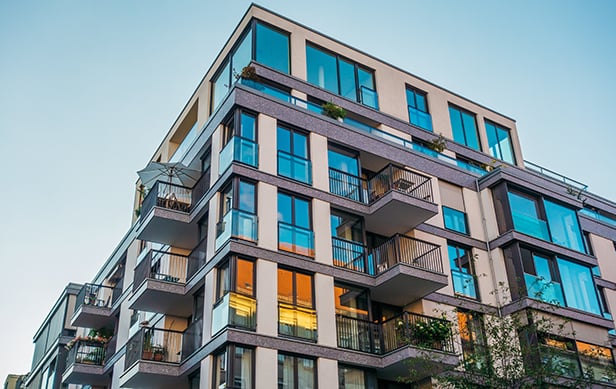
SUNNYVALE, CA—With market projections stating that there will be more than 171 million active virtual reality users by 2018, Matterport is turning its attention to industries such as travel/hospitality, architecture, engineering, construction and insurance, where VR and 3D reality capture has the potential to replace static 2D photography. In turn, this may influence how people protect assets, interact with real-world places, and design and construct buildings. In this exclusive, Matterport's CEO, Bill Brown, recently discussed how 3D models are replacing 2D photography in the world of real estate. Brown's vision for 3D as the new 2D offers an interesting look at this technology's immense potential.
GlobeSt.com: Matterport has already demonstrated traction in the real estate market. What do you see as the key factors that will drive the next wave of adoption?
Brown: Moving forward, we see two main drivers of further adoption. The first is the expansion of our Matterport capture ecosystem with thousands of capture service providers, making Matterport easy and cost-effective for real estate brokers in order to best market their property listings. The second factor is the ability to use the Matterport Pro2 camera and cloud platform as an all-in-one media solution.
With the Matterport Pro2 camera, we added 134 megapixel high-dynamic range spherical images that enable our customers to capture a print-quality gallery of photos along with an immersive 3D walkthrough from one quick and easy capture session. This technology can serve as a replacement for traditional digital single-lens reflex-based 2D cameras for many listings. And because it can also create an immersive 3D tour experience, we believe it offers a unique combination of differentiation and cost savings for real estate industry professionals.
GlobeSt.com: Do you believe that immersive 3D media will completely replace 2D photos and video in real estate? Do you think this will hold true for other industries as well?
Brown: Yes, we believe simple 2D media, aka photos and video, will be replaced by 3D media because 3D media enables a multitude of 2D or 3D modes. True3D is really 2D plus another dimension. Websites will eventually stop showing just a set of disjointed 2D images or director-controlled walkthroughs and will instead provide an immersive experience with both 2D and 3D perspectives. Once this trend takes hold, people will stop using just a 2D camera to capture content for real estate listings and other markets, and will instead use a 3D-enabled camera to capture that extra dimension, which delivers an immersive experience.
It's more cost-effective to use a single capture session to generate both an immersive walkthrough and a set of 2D media than it would be to just capture the 2D photo gallery with a DSLR camera. Given that the cost of capturing a space in 3D is often less than capturing it in 2D, we see 3D becoming the new industry standard not just for real estate, but for other industries as well. Immersive 3D media is a much more effective and versatile medium for managing and making decisions about any property through its lifecycle.
GlobeSt.com: Can you fill us in on Matterport's traction in other sectors such as travel/hospitality, architecture, engineering, construction and insurance?
Brown: In addition to residential real estate, we are already seeing adoption in other industry verticals such as multifamily, commercial real estate, hotels, vacation rentals, business listings, event venues, retail, architecture, engineering, construction, insurance, appraisal and facilities management. Our customer-partners include companies like residential brokerage Redfin, mechanical engineering firm TL Circle and vacation rental platform Vacasa.
The biggest factor for adoption will be the evolution of cloud-based applications that make use of digital media to facilitate the management of properties through their lifecycles. For almost 30 years, residential real estate has led the way in the use of digital media, incorporating photo galleries into consistently improving visual presentations of home listings. As other industries see the availability of low-cost methods of capturing immersive 3D media for spaces, we are seeing them adapt their workflow and leverage new cloud-based applications to incorporate 3D into their decision-making.
Matterport's 3D application platform, which enables customers to incorporate 3D models and spatial metadata into their own applications, will also be an important facilitator and driver of adoption across multiple industries. We're already seeing the early stages of this evolution impacting the real estate business with applications for virtual staging, for example.
GlobeSt.com: What are your growth objectives for the year ahead?
Brown: We are planning to expand our residential adoption while growing our business in other industries and geographies. Our international focus is on Europe/Middle East/Africa, where we have had a presence for a few years. We're also starting to build our plans to expand within Asia Pacific and South America. To date, Matterport has created 3D models of over 900,000 spaces, and by the end of 2018, we expect the total number of real-world spaces captured and digitized on our platform to exceed 1.5 million.
© Touchpoint Markets, All Rights Reserved. Request academic re-use from www.copyright.com. All other uses, submit a request to [email protected]. For more inforrmation visit Asset & Logo Licensing.







